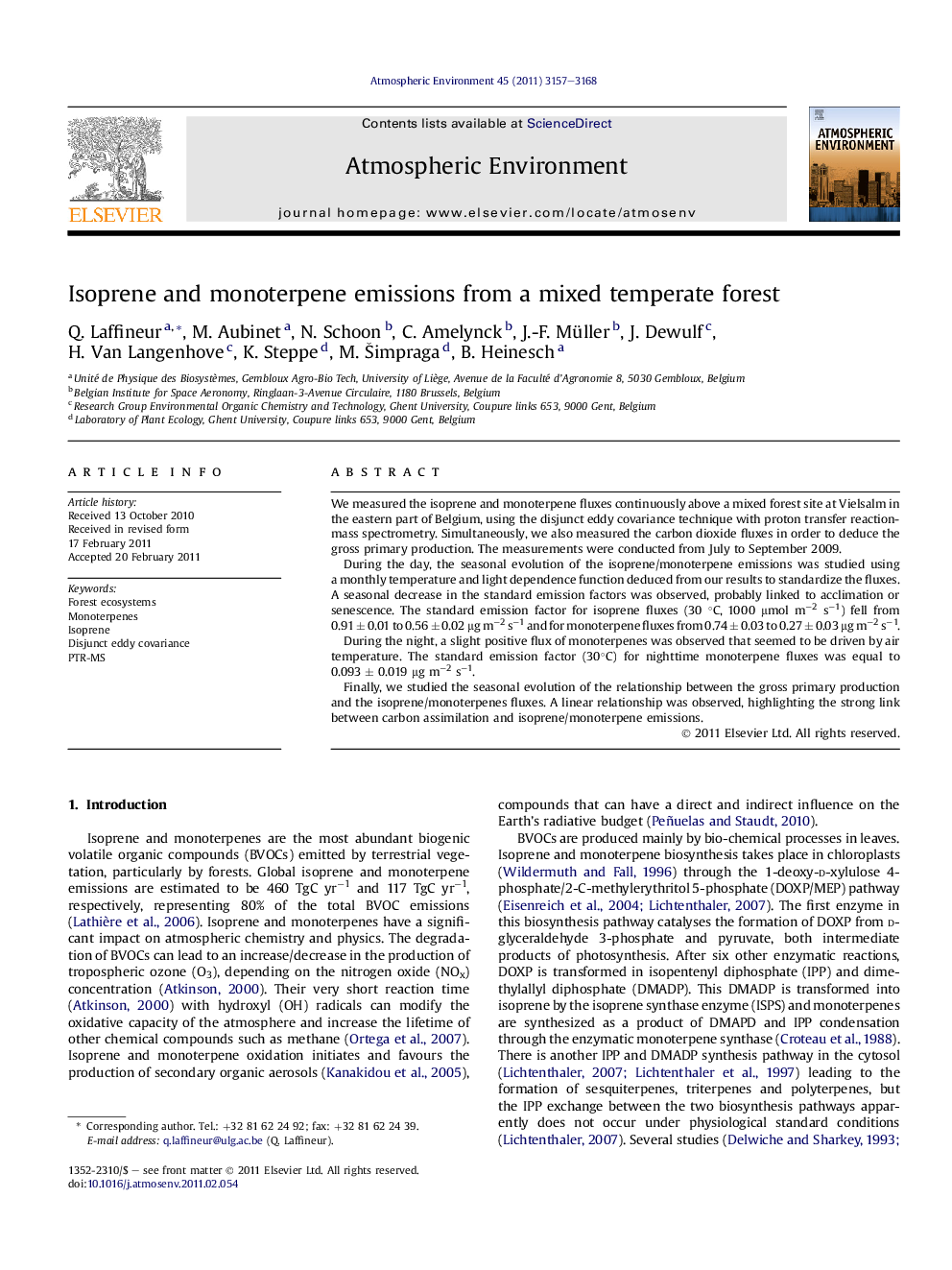| Article ID | Journal | Published Year | Pages | File Type |
|---|---|---|---|---|
| 4439799 | Atmospheric Environment | 2011 | 12 Pages |
We measured the isoprene and monoterpene fluxes continuously above a mixed forest site at Vielsalm in the eastern part of Belgium, using the disjunct eddy covariance technique with proton transfer reaction-mass spectrometry. Simultaneously, we also measured the carbon dioxide fluxes in order to deduce the gross primary production. The measurements were conducted from July to September 2009.During the day, the seasonal evolution of the isoprene/monoterpene emissions was studied using a monthly temperature and light dependence function deduced from our results to standardize the fluxes. A seasonal decrease in the standard emission factors was observed, probably linked to acclimation or senescence. The standard emission factor for isoprene fluxes (30 °C, 1000 μmol m−2 s−1) fell from 0.91 ± 0.01 to 0.56 ± 0.02 μg m−2 s−1 and for monoterpene fluxes from 0.74 ± 0.03 to 0.27 ± 0.03 μg m−2 s−1.During the night, a slight positive flux of monoterpenes was observed that seemed to be driven by air temperature. The standard emission factor (30°C) for nighttime monoterpene fluxes was equal to 0.093 ± 0.019 μg m−2 s−1.Finally, we studied the seasonal evolution of the relationship between the gross primary production and the isoprene/monoterpenes fluxes. A linear relationship was observed, highlighting the strong link between carbon assimilation and isoprene/monoterpene emissions.
► Isoprene and monoterpene emissions during the day are driven by temperature and light. ► Monoterpene emissions during the night seems to be driven by temperature. ► Isoprene and monoterpene emissions are strongly linked with the carbon assimilation. ► Standard emission factors for isoprene and monoterpenes decrease with the season. ► Standard emission factor seems to be linked to the friction velocity.
